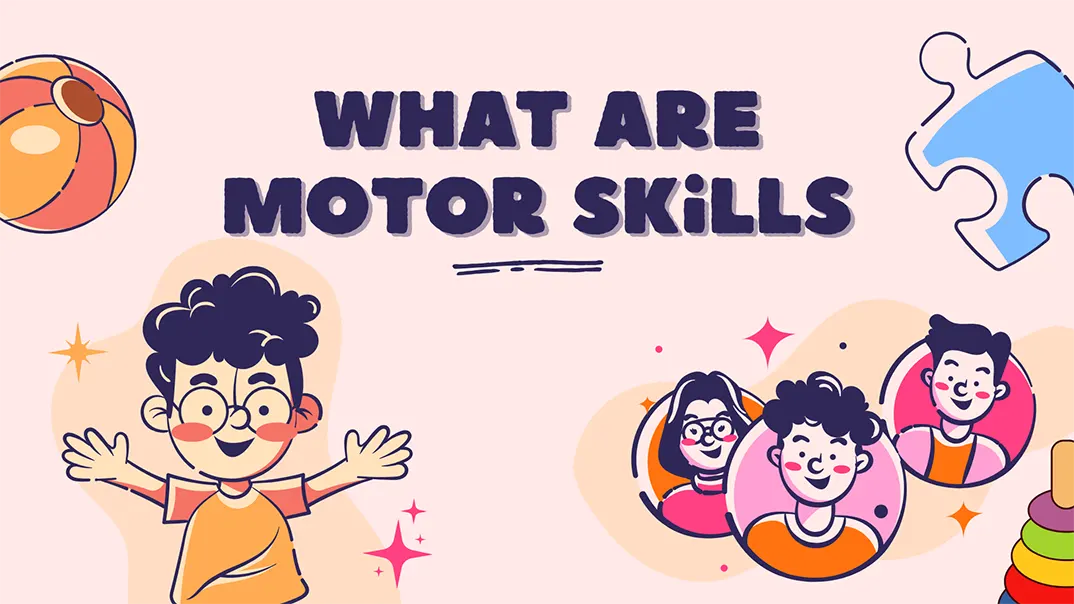Have you ever noticed that some children struggle with tasks like holding a pencil, tying their shoes, or catching a ball, while others pick them up with ease? These differences often leave parents and educators asking: What causes such variation in physical coordination and skill development?
Motor skills refer to the abilities that enable the body to perform coordinated movements using muscles and the nervous system. They are generally classified into two categories: gross motor skills, which involve large muscle activities like running and climbing, and fine motor skills, which focus on smaller, more precise movements like cutting with scissors or tying shoelaces. These skills develop gradually from infancy through childhood and are influenced by genetics, environment, and daily practice.
In this article, we’ll guide you through everything you need to know about motor skills—how they develop, why they matter, and what you can do to support them at every stage. Whether you’re a parent, teacher, or caregiver, understanding motor skills can help you better recognize your child’s needs and encourage growth through play, learning, and everyday routines.
What Are Motor Skills?
Motor skills are the coordinated movements and actions that involve the use of muscles to perform specific tasks. These skills are fundamental for children as they grow, enabling them to interact with their environment, express themselves, and gain independence in daily activities. From crawling and walking to holding a spoon or writing with a pencil, motor skills are at the heart of a child’s physical development.
Motor skills don’t develop overnight—they evolve gradually through exploration, repetition, and practice. Influenced by genetics, environment, and experiences, children reach different motor milestones at their own pace. Recognizing the signs of typical and atypical development allows caregivers to tailor activities that support each child’s unique journey.
Types of Motor Skills
Motor skills are typically divided into two main categories: fine motor skills and gross motor skills. Each type plays a unique role in child development, and both are essential for completing everyday tasks. Understanding the difference between them helps caregivers and educators provide appropriate activities that support physical and cognitive growth.
What Are Fine Motor Skills in Child Development?
Fine motor skills in child development refer to the ability to make precise movements using the small muscles in the hands, fingers, and wrists. These skills are essential for performing everyday tasks such as holding utensils, turning pages in a book, buttoning clothing, drawing, and using scissors. While they might seem like simple actions to adults, for children, these tasks represent significant developmental milestones that require both practice and coordination.
Fine motor skills are not just about muscle strength—they also involve visual-motor integration, which is the ability to coordinate visual input with hand movements. For example, when a child sees a line on a paper and tries to trace it with a crayon, they are using fine motor skills in tandem with hand-eye coordination. This complex integration supports not only physical development but also cognitive and sensory processing skills.
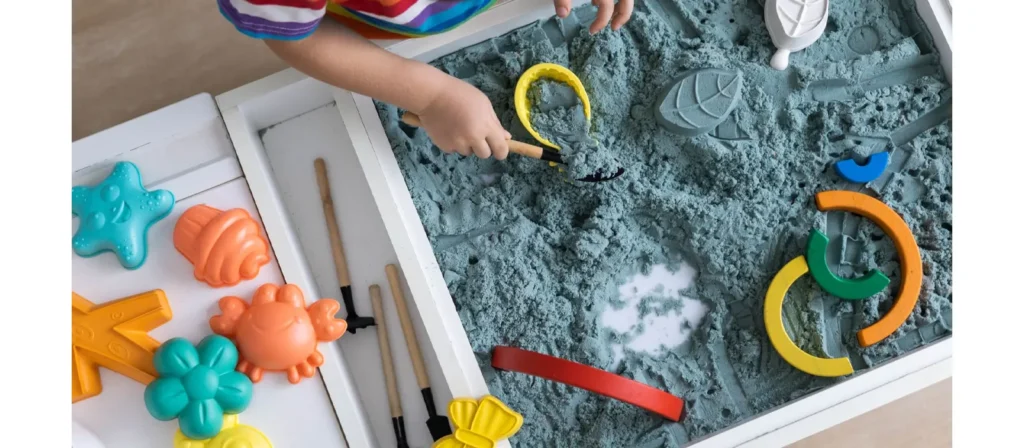
Fine Motor Skills Examples
Here are some common examples of fine motor skills in child development:
- Holding and using a pencil or crayon
- Cutting with child-safe scissors
- Buttoning or unbuttoning clothing
- Tying shoelaces
- Manipulating small toys or puzzle pieces
- Picking up objects with fingers (pincer grasp)
- Stacking blocks or threading beads
What Are Gross Motor Skills in Child Development?
Gross motor skills are the physical abilities that involve the large muscle groups of the body—specifically those used for actions like walking, running, jumping, climbing, sitting, and standing. These motor skills are essential for overall movement and coordination, allowing children to perform everyday activities that require strength, balance, and control. Unlike fine motor skills, which rely on small, precise movements, gross motor skills are all about broad, dynamic motions that engage the entire body.
In child development, gross motor skills begin to emerge in infancy with movements like rolling over and crawling. As children grow, they develop more complex skills such as skipping, kicking a ball, or pedaling a tricycle. These movements are critical not just for physical activity but also for a child’s ability to explore their environment, participate in group play, and gain independence. Strong gross motor development lays the foundation for academic readiness, emotional confidence, and long-term physical health.
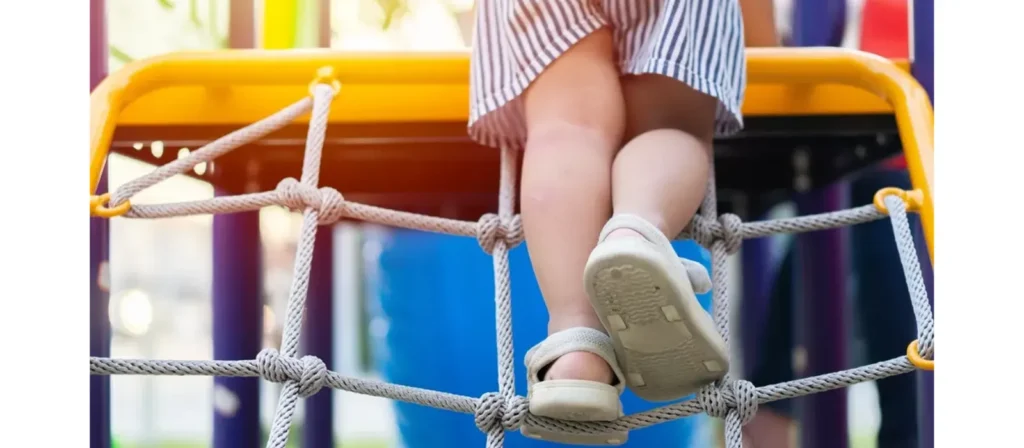
Gross Motor Skills Examples
Here are typical examples of gross motor skills seen in early childhood:
- Walking, running, and skipping
- Jumping and hopping
- Climbing stairs or using playground equipment
- Catching, throwing, or kicking a ball
- Riding a tricycle or bicycle
- Balancing on one foot
- Dancing or doing basic gymnastics
Fine vs Gross Motor Skills
Understanding the differences between fine and gross motor skills is essential for supporting a child’s overall development. While both types of motor skills involve movement and coordination, they target different muscle groups and serve distinct functions. Fine motor skills focus on precise, controlled movements using the small muscles in the hands and fingers. In contrast, gross motor skills involve larger muscle groups used for whole-body movement and physical strength.
Here’s a quick comparison to highlight the key differences between fine and gross motor skills:
| Aspect | Motricité fine | Motricité globale |
|---|---|---|
| Muscle Groups Involved | Small muscles (hands, fingers, wrists) | Large muscles (arms, legs, torso) |
| Examples of Activities | Writing, buttoning, cutting with scissors, drawing | Walking, running, jumping, climbing, throwing |
| Type of Movement | Precise, detailed, and controlled | Broad, large-scale, and strength-based |
| Developmental Milestones | Pincer grasp, drawing shapes, tying shoelaces | Rolling over, walking, hopping, balancing |
| Importance | Supports academic tasks, self-care, and creativity | Enhances physical strength, balance, and outdoor play |
| Common Tools/Resources | Crayons, beads, lacing cards, tweezers | Balls, balance beams, bikes, obstacle courses |
Both fine and gross motor skills are interrelated and develop over time through play, practice, and daily routines. Balanced development in both areas is essential for school readiness, physical health, and overall independence.
Why Are Motor Skills Important in Children’s Development?
Motor skills are fundamental to a child’s ability to explore, learn, and interact with the world. From early infancy through adolescence, the development of motor skills influences nearly every aspect of growth—physically, cognitively, socially, and emotionally.
Enhanced Physical Health and Coordination
Developing motor skills significantly improves a child’s overall physical health. As children engage in activities that build both fine and gross motor skills, they strengthen their muscles, improve their balance, and refine their coordination. These skills support good posture, body control, and endurance—crucial elements for active play and participation in sports. Regular movement also promotes cardiovascular health and helps prevent childhood obesity.
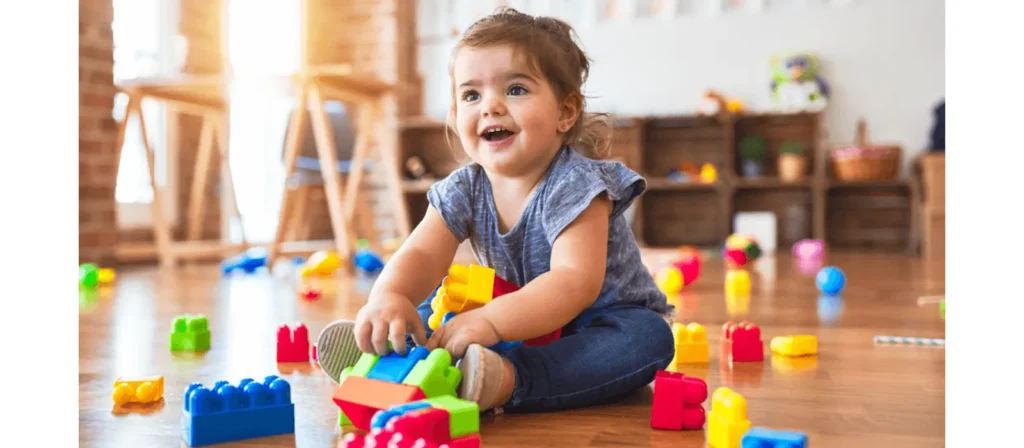
Boosted Brain Development and Learning Readiness
Motor skill development is closely linked to brain development. When children engage in activities that require movement, such as climbing, drawing, or bouncing a ball, they’re also building neural connections that support memory, focus, and problem-solving. These brain-body connections make learning more effective. In fact, research shows that children with strong motor skills often perform better academically, particularly in reading and mathematics.
Improved Emotional Regulation and Confidence
As children become more physically competent, they also build emotional strength. Mastering new motor tasks—whether tying their shoes or riding a bike—gives children a sense of accomplishment. These wins build self-confidence and encourage them to take on new challenges. On the flip side, children with delayed motor skills may struggle with frustration or avoidance behaviors. Encouraging motor development helps reduce anxiety and supports a positive emotional outlook.
Greater Independence in Daily Life
Children rely on motor skills for nearly every self-care task—from feeding themselves and getting dressed to brushing their teeth and using the toilet. Developing strong motor skills allows children to complete these tasks on their own, which promotes independence and eases the caregiving burden for adults. Independent children are more confident, adaptable, and ready for school routines and social settings.
Strengthened Compétences sociales and Peer Interaction
When children can confidently run, jump, throw, or participate in group games, they’re more likely to engage in social play. Motor development supports peer interaction, turn-taking, and cooperative learning. These experiences not only improve motor control but also build friendships, communication skills, and a sense of belonging.
Motor Skills Development Milestones
Motor skills don’t develop all at once—they follow a predictable sequence, unfolding gradually as a child’s brain and body mature. Tracking these milestones is essential because they reflect the child’s neuromuscular development and readiness for specific activities. While each child develops at their own pace, these stades de développement help caregivers recognize what to expect and when to provide extra support if needed.
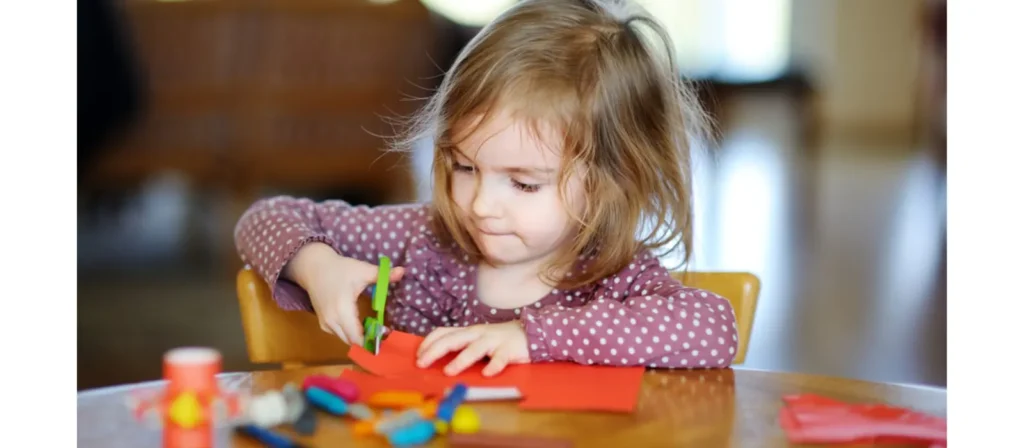
Fine Motor Skills Development Milestones
Fine motor skills emerge early in infancy and continue to evolve through the early school years. These skills develop from basic grasping actions to complex hand-eye coordination needed for schoolwork and daily living.
- Birth to 6 months: Babies begin to swipe at objects, bring their hands to their mouths, and briefly hold toys placed in their hands. Their movements are mostly reflexive but gradually become more purposeful.
- 6 to 12 months: Children begin to use a pincer grasp, picking up small items between their thumb and index finger. They also start transferring objects between hands and exploring textures and shapes.
- 1 to 2 years: Toddlers gain more control, scribbling with crayons, stacking two to three blocks, and self-feeding with fingers or a spoon.
- 2 to 3 years: Their movements become more refined. They can turn pages in a board book, start manipulating simple tools like large beads or shape sorters, and use a spoon with fewer spills.
- 3 to 4 years: Preschoolers begin using safety scissors, draw basic shapes, and manage clothing fasteners such as zippers and large buttons with growing confidence.
- 4 to 5 years: Children improve pencil grip, print some letters, and perform more detailed tasks like cutting along lines or tracing shapes.
- 5 to 6 years: By this stage, they can tie shoelaces, write their names clearly, and color within lines, showing increasing control and precision.
These milestones support readiness for writing, self-care, and classroom tasks. Encouraging drawing, crafting, and tool use helps refine these abilities.
Gross Motor Skills Development Milestones
Gross motor skills develop from head to toe, following a pattern known as cephalocaudal progression. Early movements focus on head and trunk control and eventually advance to coordinated use of arms and legs.
- Birth to 6 months: Infants gain head control, push up on arms during tummy time, and begin rolling from front to back.
- 6 to 12 months: They start to sit without support, crawl, pull themselves up to stand, and cruise along furniture in preparation for walking.
- 1 to 2 years: Toddlers walk independently, begin to run, climb onto mobilier de garderie, and carry toys while walking. Their balance and stability steadily improve.
- 2 to 3 years: Children can jump with both feet, run more smoothly, throw a ball with some accuracy, and walk upstairs with assistance.
- 3 to 4 years: They hop on one foot, ride a tricycle, catch large balls with both hands, and start moving rhythmically to music or verbal commands.
- 4 to 5 years: They show greater coordination, gallop or skip, balance on one foot for longer, and begin participating in more structured games and physical activities.
- 5 to 6 years: Children at this age exhibit advanced control—riding a bike with training wheels, jumping rope, navigating balance beams, and integrating complex motor patterns into play and sports.
Strong gross motor development enables children to participate actively in school, sports, and peer play, fostering confidence and physical resilience.
Understanding these motor skills milestones helps parents and educators support a child’s physical, emotional, and cognitive development. Recognizing when a child is progressing typically—or when extra support may be needed—can make a lasting difference in their learning and well-being.
Factors Affecting Motor Skill Development
Motor skill development is influenced by a wide range of factors, both internal and external. While the general progression of fine and gross motor abilities follows a natural developmental timeline, various conditions can accelerate, delay, or modify how these skills emerge. Understanding these influencing factors is essential for parents, educators, and healthcare providers to create supportive environments that foster healthy growth.
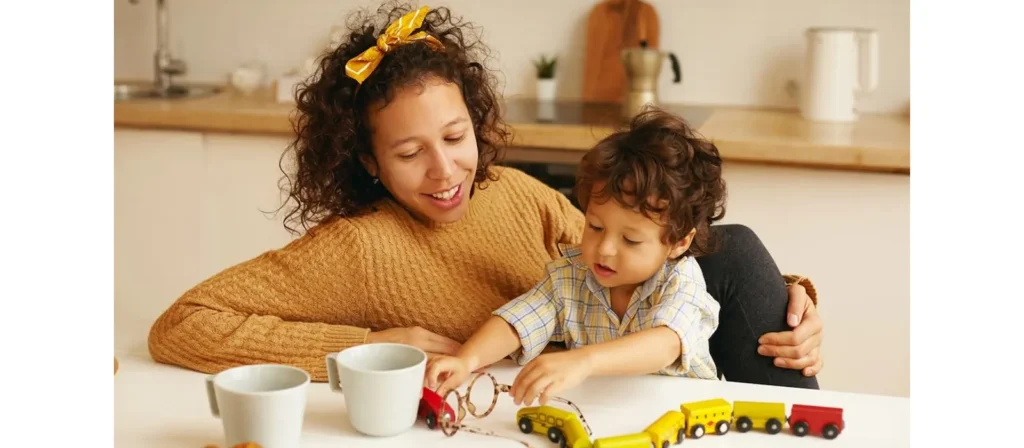
Biological Factors
A child’s genetics play a foundational role in motor skill development. Neurological maturity, muscle tone, reflex integration, and physical health all impact how effectively a child can perform motor tasks. Premature birth, genetic conditions, or developmental disorders such as cerebral palsy can affect motor progress and may require early intervention or therapy.
Physical Health and Nutrition
Adequate nutrition is critical for the development of strong muscles, bones, and brain function. Children who are malnourished or suffer from chronic illnesses may experience delays in both fine and gross motor skills. Regular physical health checkups can help detect issues early and ensure that physical growth supports motor competence.
Environment and Stimulation
The environment in which a child grows up has a direct influence on motor development. Children who have access to safe play spaces, jouets éducatifs that encourage manipulation and exploration, and caregivers who actively engage them in physical activities typically show stronger motor skills. A lack of stimulation or excessive screen time, on the other hand, can hinder both movement and muscle control.
Opportunities for Practice and Repetition
Motor skills improve with consistent practice. Activities that allow children to repeat movements—like climbing, drawing, or building—help strengthen neural pathways and refine control. Structured environments such as schools and therapy settings, as well as free play at home, provide valuable repetition that reinforces learning and skill acquisition.
Cultural and Socioeconomic Influences
Cultural norms often shape how motor skills are prioritized. In some cultures, children are encouraged to explore physical tasks independently at an early age, while in others, adults may assist more, potentially delaying some independent motor experiences. Socioeconomic status also plays a role: families with limited access to parks, learning materials, or nutritious food may face additional challenges in supporting motor development.
Parental and Educational Support
Parental involvement is one of the most significant predictors of healthy motor skill development. When adults model physical activity, provide encouragement, and offer age-appropriate challenges, children are more motivated to practice and improve. Educators also play a crucial role by integrating movement-based learning and identifying children who may benefit from additional support.
How to Improve Motor Skills?
Improving motor skills involves more than just giving children activities to do—it requires purposeful planning, patience, and consistent engagement. Whether the focus is on fine motor precision or gross motor coordination, developing these skills supports overall learning, independence, and confidence. Here’s how to target each area effectively through meaningful exercises and real-world practice.
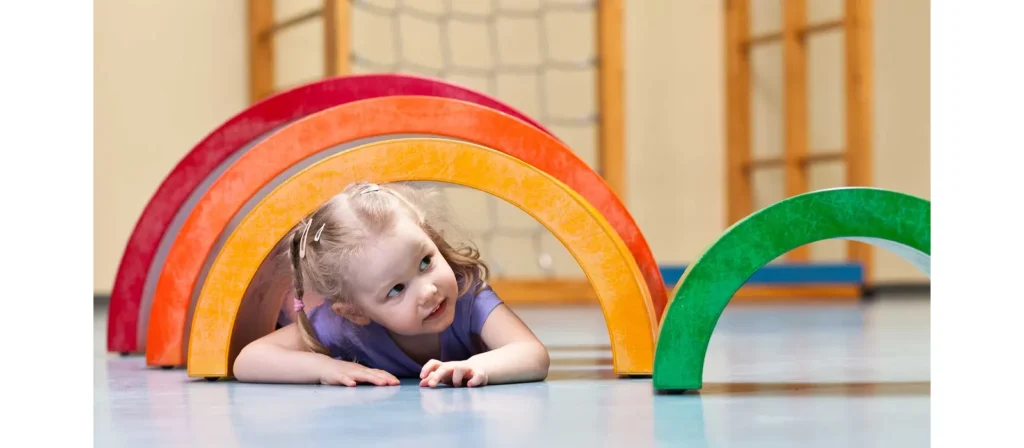
How to Work Out Fine Motor Skills Exercises?
Fine motor skills are developed through activities that challenge the small muscles in the hands and fingers. These skills are essential for writing, dressing, and other precise, everyday tasks. Strengthening them requires a balance of creativity, repetition, and increasing complexity.
Start with simple fine motor activities such as stacking blocks, tearing paper, or pushing buttons on toys. These help younger children build control and grip strength. As they grow, introduce more precision-based tasks like drawing shapes, tracing patterns, or using tweezers to pick up small items. Arts and crafts, especially those involving cutting, gluing, and folding, provide rich opportunities for both creativity and skill-building.
In daily routines, look for moments that naturally encourage fine motor use:
- Encourage children to dress themselves using zippers and buttons.
- Let them help in the kitchen by stirring, scooping, or using child-safe knives.
- Introduce writing tools early—begin with thick crayons or markers and gradually shift to pencils and pens as grip improves.
Keep in mind that repetition and patience are key. Children might need to repeat tasks many times before achieving consistency, and progress can vary widely from child to child. Always offer support and celebrate their effort, not just their outcomes.

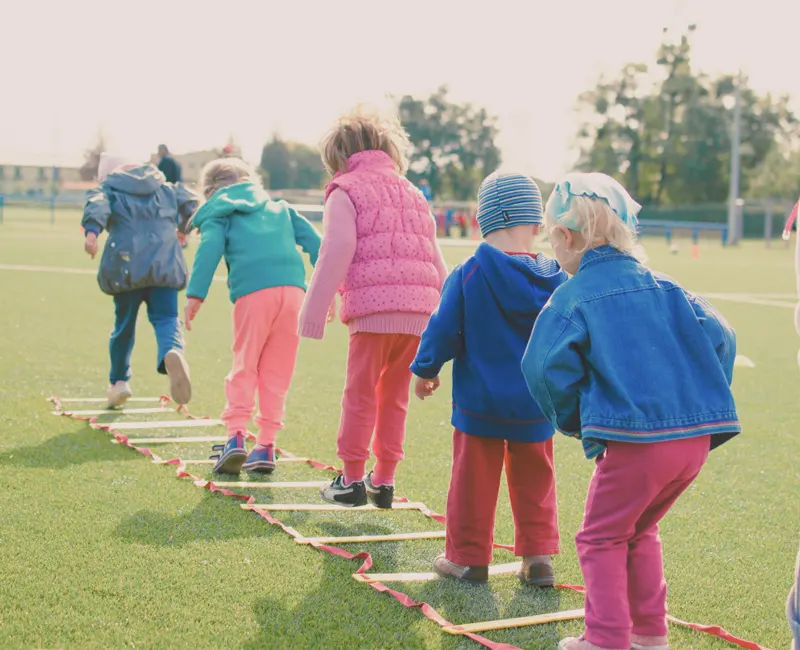
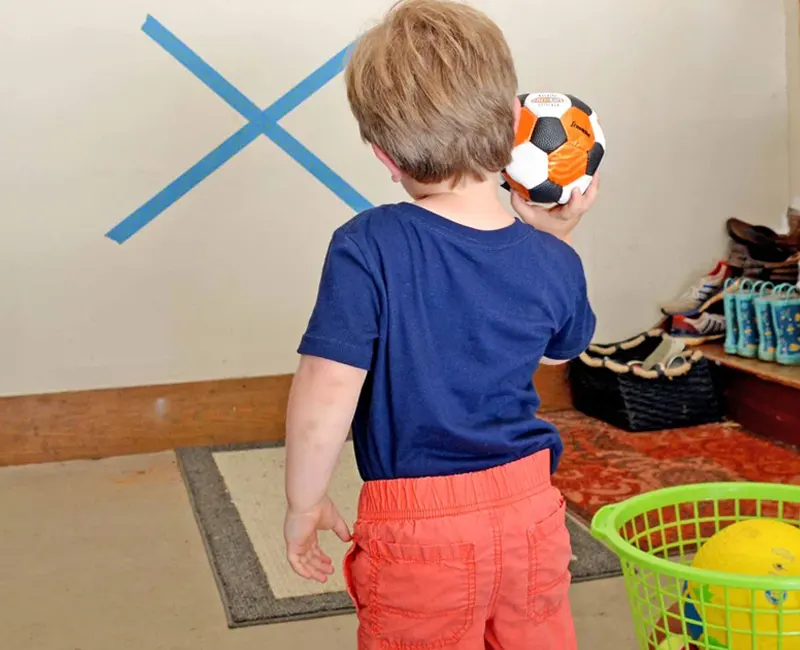
How to Work Out Gross Motor Skills Exercises?
Gross motor development centers on large muscle movement and whole-body coordination. These skills form the base for balance, strength, endurance, and participation in sports or group play. Exercises should be energetic, varied, and adapted to the child’s developmental level.
Young children benefit from active, unstructured play: running, crawling, climbing, or rolling. As they grow, introduce more structured movement challenges like hopping on one foot, walking on a line, or catching and throwing balls. Gross motor activities like jumping rope, kicking soccer balls, or playing simple team games can significantly enhance gross motor control and confidence.
You don’t need expensive equipment to support gross motor skills:
- Create indoor obstacle courses using pillows and mobilier de classe.
- Use painter’s tape to make hopscotch grids or balance lines on the floor.
- Try simple yoga poses to improve strength and flexibility.
Outdoor play is especially beneficial, providing space to run, explore, and engage in natural movement patterns. Parks, playgrounds, or even backyard games offer excellent chances to improve coordination and spatial awareness.
The key is consistency and variety. Children thrive when physical activity is part of their daily lives and when they’re challenged in a fun, low-pressure environment. Mixing guided exercises with spontaneous play helps them build motor skills naturally and joyfully.
Envoyez-nous un message si vous avez des questions ou si vous souhaitez obtenir un devis. Nos experts vous répondront dans les 48 heures et vous aideront à sélectionner le produit qui vous convient.
Signs of Motor Skills Delay
Motor delays can impact a child’s ability to perform age-appropriate activities like crawling, walking, feeding themselves, or holding a crayon. Early identification is essential, as timely support can often improve outcomes and help the child build confidence and independence.
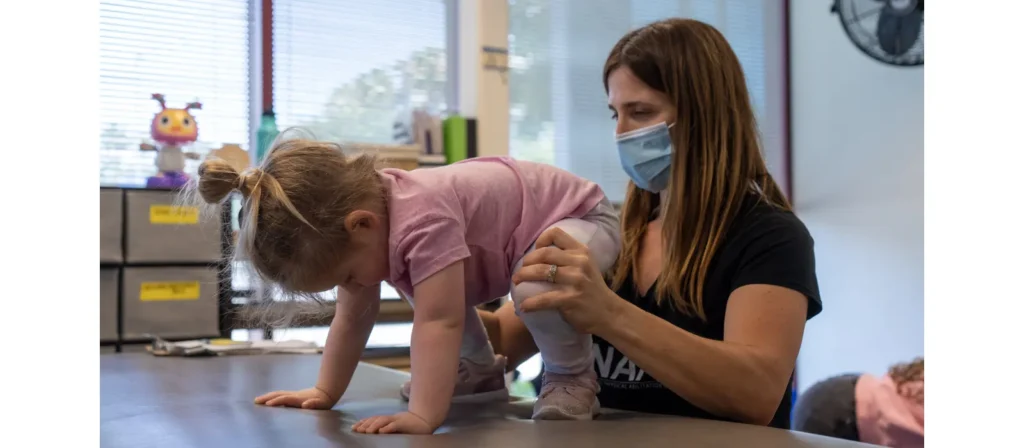
Delayed Fine Motor Skills
Children with fine motor delays often struggle with tasks that require hand and finger coordination. You might notice:
- Difficulty picking up small objects or using a pincer grasp beyond 12 months
- Trouble holding crayons, spoons, or other tools
- Avoidance of drawing, coloring, or puzzles
- Poor hand dominance or using both hands interchangeably after age 4
- Difficulty with self-care tasks like buttoning, zipping, or brushing teeth
Delayed Gross Motor Skills
Gross motor delays are often more visible and involve the larger movements of the body. Signs can include:
- Not sitting independently by 9 months or walking by 18 months
- Frequent falls or clumsy walking and running
- Hesitance or inability to climb stairs, jump, or balance
- Difficulty keeping up with peers during physical play or sports
- Rigid or floppy muscle tone, or asymmetrical movement patterns
Avoidance of Movement-Based Tasks
In some cases, children may not exhibit overt physical delays but still avoid activities that require motor coordination. This can present as:
- Preferring sedentary play over physical activities
- Complaining about tasks like PE or handwriting
- Seeming overly cautious or fearful during climbing or balancing
- Emotional frustration or tantrums when faced with movement challenges
This avoidance behavior can often be misunderstood as laziness or defiance, when in fact it may stem from underlying motor skill difficulties.
Who Can Help with Motor Skill Delays?
When concerns about motor skills arise, a multidisciplinary team of professionals can provide valuable support and guidance. The following experts are commonly involved in assessing and addressing motor delays:

- Pediatrician
Your child’s primary care doctor is often the first point of contact. They can evaluate overall development, rule out medical conditions, and refer you to specialists. - Occupational Therapist (OT)
Specializes in improving fine motor skills, hand-eye coordination, and daily living tasks like dressing, writing, and self-care routines. OTs also support sensory-motor integration. - Physical Therapist (PT)
Focuses on gross motor development, strength, balance, coordination, and mobility. PTs help children improve posture, walking patterns, and physical endurance. - Developmental Pediatrician
Offers a comprehensive evaluation of developmental delays and coordinates with therapy teams to create individualized care plans. - Early Intervention Programs
In many countries, government-supported early intervention services provide free or low-cost assessments and therapies for children under a certain age (often under 3). - School-Based Support Staff
For school-aged children, occupational and physical therapy may be available through special education services. Teachers and school psychologists can also contribute to monitoring and referrals.
FAQ
- What are the five gross motor skills?
The five basic motor skills usually refer to sitting, standing, walking, running, and jumping. These are foundational gross motor skills that support physical movement and balance. They play a crucial role in early childhood development, allowing children to explore their environment, gain independence, and build confidence in their physical abilities. - At what age do motor skills typically develop?
Motor skills begin to develop from birth and continue to evolve throughout early childhood. Milestones vary by age, with basic gross motor skills developing in infancy and more refined fine motor skills emerging during preschool and kindergarten years. - How can I help my child improve their motor skills at home?
Encourage hands-on play, provide age-appropriate toys, promote outdoor activities, and integrate physical tasks into daily routines. Activities like building with blocks, playing ball, or drawing can support development. - Can motor skill delays affect academic performance?
Yes. Fine motor delays can impact handwriting and classroom participation, while gross motor difficulties may affect a child’s ability to sit upright, focus, or engage in physical activities with peers. - Are motor delays permanent?
Not always. Many children catch up with the right interventions and support. Early detection and targeted therapy can greatly improve outcomes. - What are the Big six fine motor skills?
The “Big 6” fine motor skills are key hand and finger movements that form the foundation for precise control and coordination. These include: reaching, pointing, touching, grasping, placing, and releasing. In some models, additional skills like twisting, pulling, pushing, tapping, squeezing, and shaking are also emphasized, resulting in what some refer to as the 6+6 or 5+4 fine motor skill framework. These actions are essential for tasks such as writing, self-care, and manipulating small objects. - Can screen time affect motor skill development?
Yes, excessive screen time can limit physical activity and reduce opportunities for hands-on learning, potentially hindering both fine and gross motor development.
Conclusion
Motor skills are at the heart of a child’s physical, cognitive, and emotional development. From sitting and grasping to running and writing, these skills enable children to interact with the world, build independence, and succeed in everyday life. Understanding the differences between fine and gross motor skills, recognizing key developmental milestones, and identifying signs of delay can help parents and educators provide timely and appropriate support.

